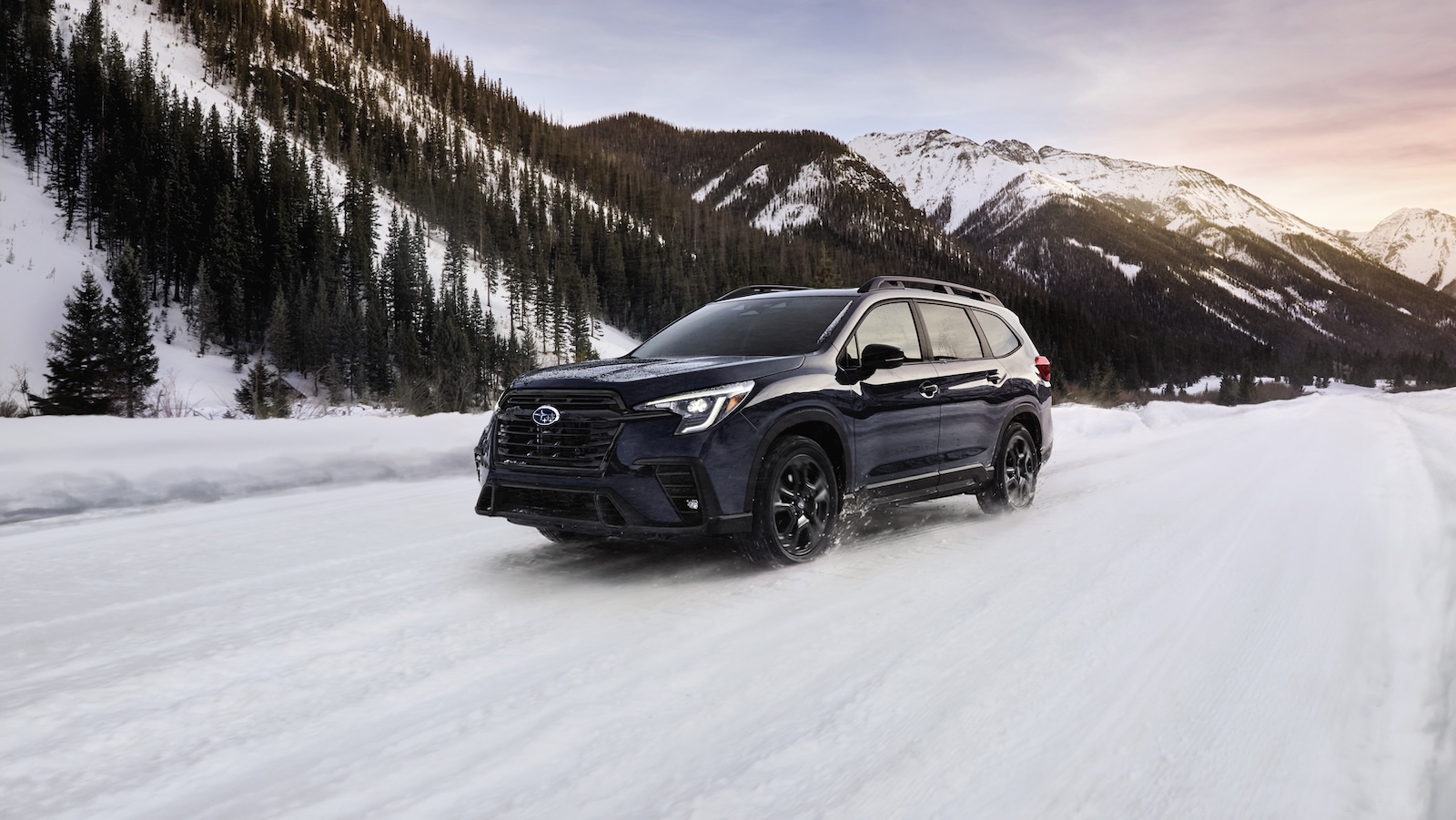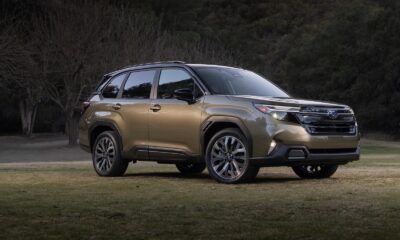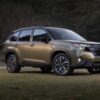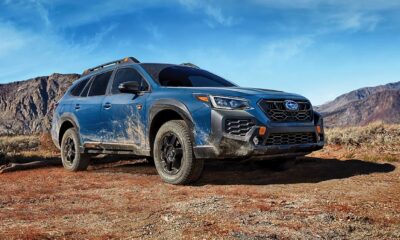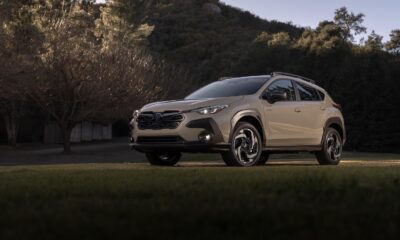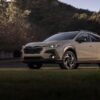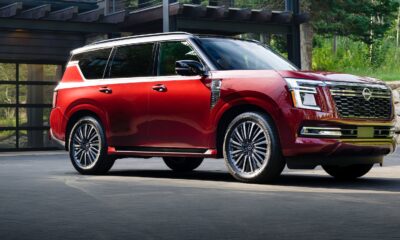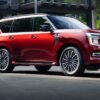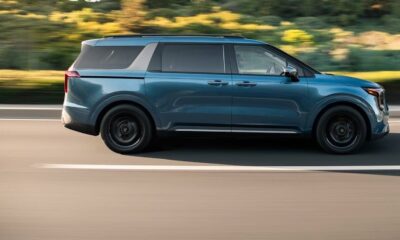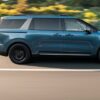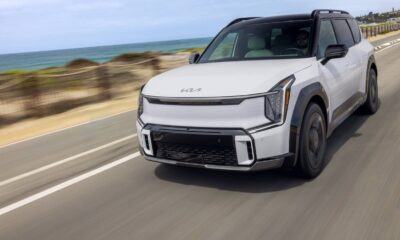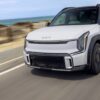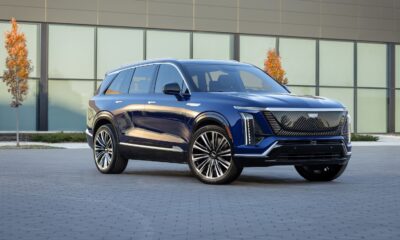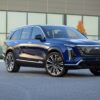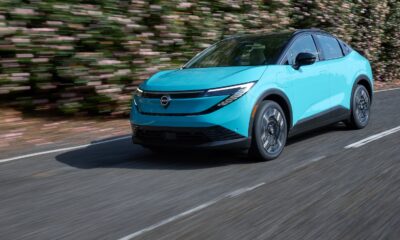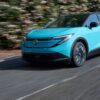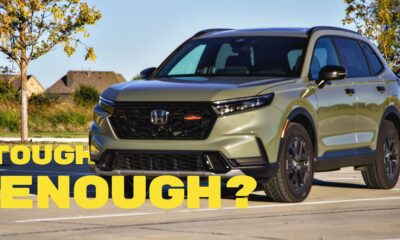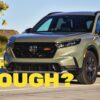Car Reviews
SUBARU’S ASCENT ONYX EDITION TOURING – ASCENT CLIMBS TOWARD THE SUMMIT
SUBARU’S ASCENT ONYX EDITION TOURING
ASCENT CLIMBS TOWARD THE SUMMIT
The 2025 Subaru Ascent is a convincing three-row SUV that knows precisely what it is: a weather-confident family hauler that prizes safety, cargo flexibility, and standard all-wheel drive. It wears rugged styling well, rides with composure, and builds on Subaru’s long habit of engineering for real-world durability.
Still, when buyers run the ownership spreadsheet, factoring in long-term fuel economy, drivetrain history, and resale, the Toyota Highlander—particularly in hybrid form—remains the class benchmark.
First impressions
The Ascent’s stance is upright and purposeful: hexagonal grille, pronounced arches, purposeful roof rails, and a ground clearance that telegraphs utility more than aerodynamic efficiency.
Subaru’s 2025 Ascent trims span a realistic price band that starts near $40,000 and stretches into the low-$50ks, a range that places it squarely against Kia, Hyundai, Honda, Ford, and Toyota in the three-row field.
Subaru pitches capability, standard AWD, and a safety-first content package; buyers who live where ice, mud, or rain rule the calendar will find that pitch persuasive.
Powertrain, real-world fuel use, and the economics of choice
Under the hood, the Ascent runs a 2.4-liter turbocharged flat-four paired to Subaru’s Lineartronic CVT, producing about 260 horsepower and 277 lb-ft of torque. The combination delivers honest acceleration and confident passing power, but fuel economy remains the Ascent’s strategic weakness.
Published figures and real-world averages sit in the low-20s for mixed driving. The most we could coax from it was 21.3 mpg, a credible result for a large AWD three-row, yet noticeably behind modern midsize hybrids.
That gap matters: hybrid competitors routinely return 35 mpg and more, trimming annual fuel expenditure significantly – and compounding into thousands of dollars of savings over a typical ownership cycle.
Toyota’s Highlander Hybrid is the foil here. Its planetary e-CVT hybrid architecture yields materially higher efficiency and, over five years, a meaningful advantage at the pump and at resale. Fuel savings and higher resale value will put over $10K back into Highlander owners’ wallets over five years.
Buyers who view ownership through a long lens will favor the Highlander’s hybrid math even if the sticker starts modestly higher.
Comfy cabin
Inside, the Ascent trades luxe pretension for hardy practicality to suit its audience.
The tested Onyx Edition Touring dresses the cabin in water-repellent upholstery, large physical climate knobs, and an 11.6-inch vertically oriented touchscreen that looks modern.
The Ascent’s strengths are obvious: wide second-row comfort, straightforward control layouts, and sensible storage solutions for family gear. The third row stays kid-friendly, as you would expect in this footprint, and cargo space behind the seats is usable for weekend packs and grocery runs.
Tech execution stops short of premium polish. The infotainment can lag and, in rare cases, reboot. This forced us to use this weird paper facsimile of the landscape. A map, the lady called it.
These are nuisance faults rather than dealbreakers, but the Ascent’s interface feels a step behind at this price point and against rivals that have sharpened their UI responsiveness.
On the road: composed capability
The Ascent’s chassis leans toward comfort without surrendering control. Steering is predictably neutral, ride tuning keeps bumps well managed, and the car feels surefooted in twisty road work for a vehicle of its size.
Subaru’s symmetrical AWD system is a standout: it gives immediate confidence in rain, snow, and light off-road tracks, whereas many competitors are merely adequate. Braking is firm and communicative, and the SUV digests long highway miles with little fuss.
That said, Subaru’s Lineartronic CVT remains an ownership talking point. In the early Ascent launch years, 2019-20, symptoms such as shuddering, hesitation, and premature shifts plagued it, which generated dealer campaigns and owner complaints.
Subaru has implemented updates that significantly reduced those complaints. Still, prospective used buyers should avoid the first two years and verify service history and completed technical service bulletins on older models.
The belt-driven CVT’s reputation still lags the near-mythical robustness attached to Toyota’s hybrid e-CVT systems, which rely on planetary gears.
Durability, reliability, and resale
Subaru’s core hardware—boxer engine architecture and AWD components—have a track record of longevity when properly maintained.
Where the Ascent dips relative to Toyota is twofold: early transmission teething in initial model years, and a resale curve that currently trails hybrid-heavy competitors.
Consumer Reports’ testing and predicted reliability metrics rank the Ascent respectably on many fronts, but below hybrid leaders when drivetrain longevity and five-year ownership economics are folded into the picture.
Numerous studies document lower brake wear thanks to regenerative braking in hybrids, and reduced engine wear thanks to fewer cold-start cycles on the internal combustion engine and diminished long-term engine stress. Push the gas, and the electric motor kicks in long before the engine revs up. It saves gas and delivers the luxurious feel of smooth power delivery.
Those cumulative effects are where hybrid Highlander ownership often outpaces Ascent ownership on lifecycle cost and on trade-in value—an $8,000–$10,000 delta at five years, which is plausible in many markets if hybrid demand remains robust, and it will. Demand for new hybrids has increased 40% over the past two years, and Toyota has seen it grow to 50% of all light vehicle sales, up from 30% in 2023.
Who should buy an Ascent?
Buy the Ascent if you live where AWD is not optional, if you pack people and gear frequently, and if you prize safety and utility over the last word in infotainment polish or hybrid fuel numbers. The Ascent is an excellent tool for outdoorsy families, owners who tow light loads, and drivers who want predictable traction in severe weather without stepping up to a larger, heavier SUV.
Buy elsewhere if fuel economy and five-year ownership cost top your list. The Highlander Hybrid and other mid-segment competitors offer higher fuel efficiency and have shown historically better resale values, which may appeal to buyers interested in long-term value.
Final verdict
The 2025 Subaru Ascent is a well-sorted, honest 3-row SUV that offers most things the family buyer asks for: space, safety, AWD confidence, and a rewarding on-road demeanor.
It climbs steadily and reliably, but it no longer stands at the summit of the segment. For buyers whose summit is long-term thrift, drivetrain simplicity and resale strength, the Toyota Highlander—especially in hybrid form—still owns that peak.
The Ascent remains a top pick when capability and weather confidence matter most; budget more at the pump and verify early-model service if shopping used.
Notes for Readers
Four midsize three-row SUVs compete closely on price but diverge on costs. Subaru Ascent and Hyundai Palisade depreciate faster, while Kia Telluride and Toyota Highlander Hybrid hold value better. The Highlander Hybrid dominates efficiency at 35 mpg, saving about $1,000 yearly in fuel compared with the others.
In four decades of journalism, Bill Owney has picked up awards for his coverage of everything from murders to the NFL to state and local government. He added the automotive world to his portfolio in the mid '90s.



